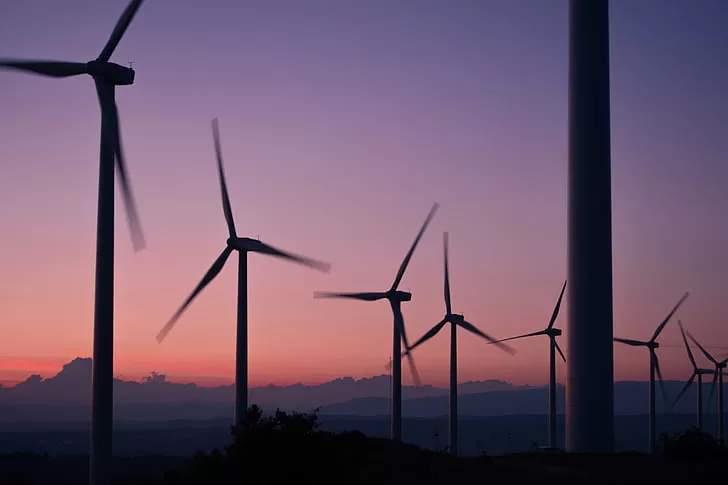In the rush to transition to renewable energy, wind turbines are frequently celebrated as a clean, sustainable option. But behind the sleek design and promise of green energy lies a truth that is rarely discussed: wind turbine raw materials are not as environmentally friendly as they appear. In fact, the production, maintenance, and disposal of wind turbines pose significant environmental and ecological challenges. This post explores why wind turbines, despite their reputation, are not the sustainable solution many believe them to be.
The Problem with Wind Turbine Raw Materials
Wind turbines are massive structures, with the largest standing as tall as 850 feet. The materials required to manufacture, install, and maintain these towering machines are far from green. Here’s a breakdown of the key raw materials used in wind turbine construction:
- Steel: The primary material used for wind turbine towers and some internal components is steel, which is heavily dependent on iron ore mining. The extraction and processing of iron ore are energy-intensive and contribute to greenhouse gas emissions.
- Fiberglass and Resin: Turbine blades are typically made of fiberglass reinforced with resin, which is neither recyclable nor biodegradable. These blades are difficult to dispose of and often end up in landfills once they’re decommissioned.
- Rare Earth Metals: Neodymium, dysprosium, and praseodymium are crucial for the production of the powerful magnets used in many turbines. The extraction of these rare earth elements has a devastating environmental impact, especially in regions like China, where the majority of these metals are sourced. Mining for rare earth metals leads to deforestation, water contamination, and hazardous waste .
These materials highlight that wind turbines are far from the environmentally friendly solution they are marketed as. In fact, the environmental cost of sourcing and producing these raw materials creates a significant carbon footprint even before the turbine starts generating energy.
Carbon Debt: How Long Until a Wind Turbine Becomes Net-Zero?
One of the key arguments in favor of wind turbines is that they eventually offset the carbon emissions created during their construction. However, this carbon “payback” period is much longer than most people realize.
On average, a wind turbine takes between 6 and 12 months to produce the amount of energy required to offset the emissions generated during its construction, transport, and installation . However, this does not include the emissions generated by maintenance, repairs, or eventual decommissioning. Additionally, this calculation is based on ideal conditions—many turbines, especially those in areas with less consistent wind, take much longer to become carbon-neutral.
Furthermore, wind turbines have a relatively short lifespan of around 20 to 25 years . This means that, in many cases, a wind turbine will spend much of its operational life merely repaying the carbon debt incurred from its creation, offering little to no true environmental benefit.
Environmental Impact of Mining Rare Earth Metals
The mining of rare earth metals for wind turbine magnets is one of the most environmentally damaging aspects of wind energy production. The extraction of neodymium and other rare earth elements involves significant environmental degradation. For every ton of rare earth metals mined, an estimated 75 tons of toxic waste is produced . This waste often contains radioactive materials, which pose long-term hazards to surrounding communities and ecosystems.
Moreover, the energy-intensive process of separating rare earth metals from ore requires large amounts of water and chemicals, further polluting the environment. Communities near rare earth mining sites have reported increased cases of cancer, respiratory diseases, and contaminated drinking water . This toxic legacy contradicts the notion of wind energy being a clean, sustainable choice.
The Landfill Crisis: Non-Recyclable Wind Turbine Blades
Wind turbine blades are made from a combination of fiberglass and resin, which are extremely difficult to recycle. At the end of their life cycle, most blades are either incinerated, contributing to air pollution, or buried in landfills.
A recent report estimates that by 2050, around 43 million metric tons of wind turbine blades will have been decommissioned, creating a significant waste disposal challenge . These blades, which can be longer than a Boeing 747’s wingspan, take up a large amount of space in landfills and do not decompose. This contributes to the growing global problem of industrial waste.
Energy Intermittency and Infrastructure Costs
Wind energy is inherently intermittent, meaning turbines only produce electricity when the wind blows. This inconsistency leads to inefficiencies and requires backup energy sources, typically fossil fuels like natural gas, to provide electricity during low-wind periods. The infrastructure needed to support this intermittent energy supply—including power plants that must ramp up and down to match wind energy availability—adds further to the carbon footprint.
Moreover, wind turbines must be placed in areas with strong, consistent wind, which often means transporting them long distances from manufacturing plants to remote locations. The transportation and installation of turbines involve additional emissions, further extending the time it takes for the turbine to reach carbon neutrality.
The Environmental Trade-Offs
When assessing the true environmental impact of wind turbines, it’s important to look at the broader picture. The production, maintenance, and eventual decommissioning of wind turbines involve the use of environmentally harmful materials, substantial energy consumption, and significant land use. These factors, combined with the environmental damage caused by rare earth metal mining and the disposal of non-recyclable turbine blades, reveal that wind turbines are far from the green energy solution they are often presented as.
The truth is, wind energy comes with substantial trade-offs that cannot be ignored. The growing demand for raw materials to build turbines, the challenges of dealing with turbine waste, and the environmental impact of mining rare earth metals all contribute to a much more complex—and far less green—reality.
Time to Reevaluate Wind Energy
While wind energy has been embraced as a clean alternative to fossil fuels, the reality is that the raw materials required for wind turbines are anything but green. From the mining of rare earth metals to the disposal of non-recyclable blades, wind turbines leave a significant environmental footprint. Additionally, the time it takes for a wind turbine to become carbon-neutral means that many turbines will never fully offset their carbon debt before they are decommissioned.
It’s time to reevaluate wind energy and seek truly sustainable alternatives. We need to look beyond the surface and recognize that wind turbine raw materials are not green.

